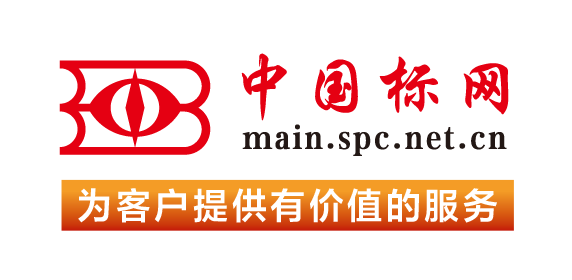【国外标准】 Standard Test Method for Fiber Cohesion in Roving, Sliver, and Top in Dynamic Tests
本网站 发布时间:
2024-02-28
开通会员免费在线看70000余条国内标准,赠送文本下载次数,单本最低仅合13.3元!还可享标准出版进度查询、定制跟踪推送、标准查新等超多特权!
查看详情>>
适用范围:
5.1 This test method for the determination of cohesion in sliver, roving, or top in dynamic tests may be used for the acceptance testing of commercial shipments but caution is advised since information on between-laboratory precision is lacking. Comparative tests as directed in 5.1.1 may be advisable.5.1.1 If there are differences or practical significance between reported test results for two laboratories (or more), comparative test should be performed to determine if there is a statistical bias between them, using competent statistical assistance. As a minimum, test samples that are as homogeneous as possible, drawn from the material from which the disparate test results were obtained, and randomly assigned in equal numbers to each laboratory for testing. The test results from the two laboratories should be compare using a statistical test for unpaired data, at a probability level chosen prior to the testing series. If a bias is found either its cause must be found and corrected, or future test results for that material must be adjusted in consideration of the known bias.5.2 The cohesive forces overcome in continuous drafting of slivers, rovings, or tops are affected by surface lubricants and such fiber properties as linear density, surface configuration, fiber length, fiber crimp, and fiber-frictional characteristics.5.2.1 The concept of drafting is one of the most important principles in the production of yarn from fibrous raw stock.5.2.2 The values of force to maintain drafting determined by this method are induced by mechanical means similar to those used in textile processing.5.2.3 The attenuation of textile fiber strands while in motion closely approximates actual textile processing conditions, and the relative values of force may be used to predict processing behaviors.5.3 Fiber cohesion is affected by the alignment of fiber in the textile strand and strand compaction in addition to the factors listed in 5.2. Although fibers are more nearly aligned in draw sliver than in card sliver, the draw sliver is more compact. Thus, for a given production run, the drafting forces are higher for draw sliver than for card sliver.5.4 In addition to the aforementioned effects on drafting forces, the direction of specimen movement through drafting rollers may give different drafting force. Fibers in slivers may have hooks of varying severity at one or both ends. Passage through drafting rollers results in higher drafting forces when the predominance of fiber hooks are oriented in the trailing mode of the strand.1.1 This test method describes the measurement of fiber cohesion as the dynamic cohesive force required to maintain drafting in rovings, slivers or tops when they are subjected to stress induced by passing between pairs of drafting rolls of different surface speeds. The cohesive force is converted to cohesive tenacity based on the linear density of the material.NOTE 1: For static tests refer to Test Method D2612.1.2 This standard does not purport to address all of the safety concerns, if any, associated with its use. It is the responsibility of the user of this standard to establish appropriate safety, health, and environmental practices and determine the applicability of regulatory limitations prior to use.1.3 This international standard was developed in accordance with internationally recognized principles on standardization established in the Decision on Principles for the Development of International Standards, Guides and Recommendations issued by the World Trade Organization Technical Barriers to Trade (TBT) Committee.
标准号:
ASTM D4120-07(2018)
标准名称:
Standard Test Method for Fiber Cohesion in Roving, Sliver, and Top in Dynamic Tests
英文名称:
Standard Test Method for Fiber Cohesion in Roving, Sliver, and Top in Dynamic Tests标准状态:
Active-
发布日期:
-
实施日期:
出版语种:
- 推荐标准
- ASC X9 TR 48-2018 Card-Not-Present (CNP) Fraud Mitigation in the United States: Strategies for Preventing, Detecting, and Responding to a Growing Threat
- ASTM 51026-23 Standard Practice for Using the Fricke Dosimetry System
- ASTM 52303-24 Standard Guide for Absorbed-Dose Mapping in Radiation Processing Facilities
- ASTM A1-00(2018) Standard Specification for Carbon Steel Tee Rails
- ASTM A1000/A1000M-17(2023) Standard Specification for Steel Wire, Carbon and Alloy Specialty Spring Quality
- ASTM A1001-18 Standard Specification for High-Strength Steel Castings in Heavy Sections
- ASTM A1002-16(2020) Standard Specification for Castings, Nickel-Aluminum Ordered Alloy
- ASTM A1004/A1004M-99(2018) Standard Practice for Establishing Conformance to the Minimum Expected Corrosion Characteristics of Metallic, Painted-Metallic, and Nonmetallic-Coated Steel Sheet Intended for Use as Cold Formed Framing Members
- ASTM A1009-18 Standard Specification for Soft Magnetic MnZn Ferrite Core Materials for Transformer and Inductor Applications
- ASTM A101-04(2019) Standard Specification for Ferrochromium
- ASTM A1010/A1010M-13(2018) Standard Specification for Higher-Strength Martensitic Stainless Steel Plate, Sheet, and Strip
- ASTM A1012-10(2021) Standard Specification for Seamless and Welded Ferritic, Austenitic and Duplex Alloy Steel Condenser and Heat Exchanger Tubes With Integral Fins
- ASTM A1015-01(2018) Standard Guide for Videoborescoping of Tubular Products for Sanitary Applications
- ASTM A1016/A1016M-23 Standard Specification for General Requirements for Ferritic Alloy Steel, Austenitic Alloy Steel, and Stainless Steel Tubes
- ASTM A102-04(2019) Standard Specification for Ferrovanadium
 购物车
购物车 400-168-0010
400-168-0010













